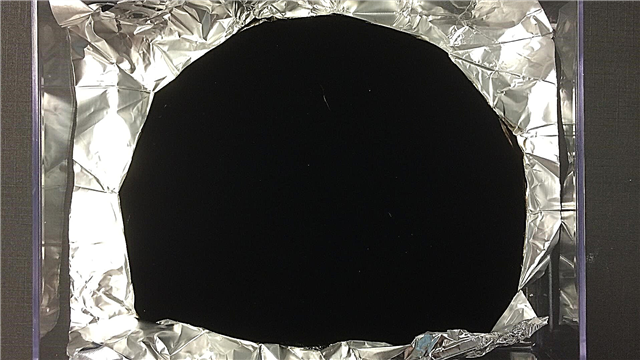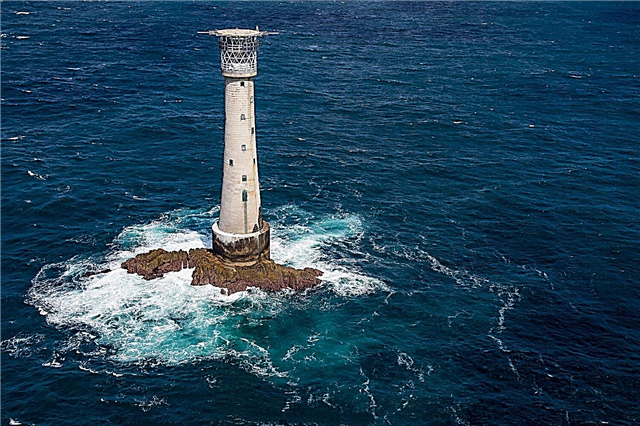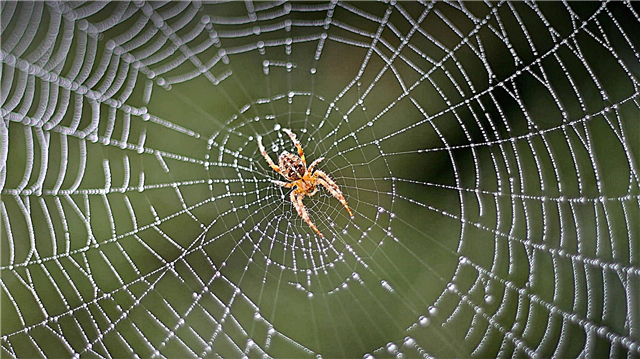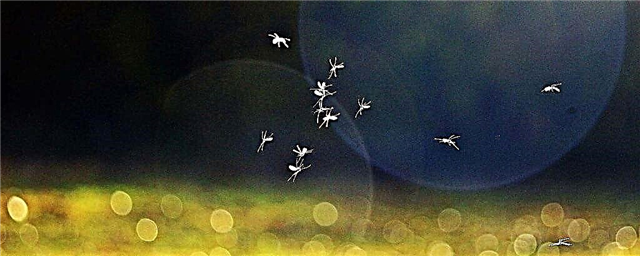
Beluga is considered one of the largest freshwater fish and has many features. For most people, this species of sturgeon is known for its expensive and tasty delicacy - black caviar, but zoologists have managed to study it enough to make a complete description.
Origin of the species

Beluga belongs to chord animals, to the class of sturgeons. Scientists believe that this species appeared about 85 million years ago, during the Eocene. Along with it, sturgeon, sterlet, stellate sturgeon and other related fish also formed. Their common ancestors first appeared in the waters of the Earth 200 million years ago, when dinosaurs dominated the planet.
Since the appearance of the fish, it has not practically changed in appearance - on the body of modern individuals, bone plates are still being formed, which were equipped with most underwater creatures that lived millions of years ago.
Beluga is considered the largest fish that lives in fresh waters. There are suggestions that its mass can reach two tons, but so far this has not been proved.
Interesting fact: the largest beluga caught in 1827, its weight was 1,500 kg. The second largest individual met in 1922 and weighed 1224 kg.
Dimensions

Statistics indicate that the beluga is gradually becoming smaller. If in the XVIII century people regularly caught individuals whose mass exceeded a ton and a length of more than 4 m, then starting from the second half of the XIX century, the maximum weight of fish caught fluctuates around 800 kg, with the same length.
Now the average weight of individuals is in the range from 50 to 90 kg, and the length does not exceed 2 m. Perhaps, over the past two centuries, people have been so diligent in catching beluga for the sake of black caviar, that the fish physically does not have time to grow to large sizes.
Description, appearance and features

Outwardly, females and males practically do not differ from each other. The upper part of the beluga is dark gray and the belly is white. Along the body are cone-shaped bone plaques inherited from their ancestors. There are small spikes on the back.
The creature has a large mouth without teeth. A mustache hanging from the upper lip to the lower lip enhances the sense of smell. At the base of the head there is a gill cover.
Interesting fact: Beluga fry have teeth, but they fall out with age. Adults are toothless.
The fish has low vision, but its eyes are practically not used. It perfectly manages the organs of smell, which allow you to find food and accurately determine the direction and distance to it.
Where does beluga live?

Beluga lives exclusively in fresh waters, it can be found in the following seas: Black, Caspian, Adriatic and Azov. When the fish spawns, it moves to the mouths of the rivers. Most of the individuals live in the Caspian Sea, and for breeding it moves to the Volga.
These fish are very picky about the environment, so they choose only clean water for living. Because of this, over the past decades, their habitat has been greatly reduced due to the emergence of new hydroelectric power stations.
Interesting fact: if a female swims in polluted waters, she refuses spawning, and preformed eggs simply dissolve.
Beluga is constantly changing its habitat, migrating through the water for thousands of kilometers. Usually she swims at great depths, where she seeks food. But in warm weather it can rise to the surface.
How long does a beluga live?
Beluga is able to live up to 100 years, if all the time is in favorable conditions. As a long-liver, the fish matures for a long time. Males reach maturity at the age of 14, and females at 18.
Unfortunately, due to developed fishing, most individuals do not have time to grow old. The average age of the fish caught is only 13 years old, which is considered a teenage period.
Range in the past and present

Now beluga is found in the Black, Caspian and Azov Seas, but earlier its habitat was larger and its population was more numerous. At the moment, this fish is on the verge of extinction due to the high interest of a person in its black caviar.
Before, beluga could be found in the Adriatic Sea, but for the last 50 years this species of sturgeon was not seen by humans.
During spawning, fish migrate to rivers, and if earlier it could swim long distances, swimming close to the ports of some cities, now because of the high human influence in these territories, it prefers to stay at the mouth.
What does beluga eat?
Juveniles feed on mollusks and crustaceans. As they grow older, they gradually switch to eating other fish. Mostly beluga prefers herring, carp, bream, zander and other underwater inhabitants. Large sizes allow you to cope with any prey.
Among this species, cannibalism is developed. Lacking enough food, large individuals can eat their own young.
Behavior and lifestyle

Beluga spends most of its life at the bottom, because due to the enormous weight, it is difficult for her to surface. The fish is constantly moving, trying to find food. Its habitat depends on the time of year. In the summer she chooses gentle crevices, and with the onset of cold weather she searches for places with greater depth.
Features of character and lifestyle
Beluga often migrates over long distances in order to find food and more favorable living conditions. The main habitat of the sea is the sea, but for breeding, it swims in the estuaries.
By type of migration, spring and winter belugas are distinguished. The first goes to the river in early spring, the second - in the fall.
Interesting fact: Beluga is mostly winter because it goes to spawn immediately after wintering.
After spawning, individuals return from the rivers back to the sea, where they continue to live and hunt for other fish. With the onset of cold weather, the species hibernates, which it conducts at great depths.
Social structure and reproduction

Coming out of hibernation, the fish goes to spawn. Despite the fact that the female is able to reproduce offspring at the age of 18, she begins to do this only when she reaches the desired mass. And this happens only at the age of 25.
At the same time, the female’s abdomen can contain up to 200 kg of eggs, and their number can reach several million. After meeting with the male, she lays eggs in places with a fast flow and enough oxygen.
Not all eggs have time to mature: most become a treat for other fish and local creatures. After hatching, fry try to stay at shallow depths and feed on plankton for the first time. Their size is from 5 to 7 cm. Young growth is rapidly growing and gaining mass. By the year they can grow up to a meter in length and gain a couple of tens of kilograms.
A female can spawn 7–9 times in her life, doing this every 2–4 years.
Migrations
Beluga migration begins during spawning. Most individuals produce offspring in spring, after hibernation. For this procedure, creatures can swim thousands of kilometers to find themselves in favorable conditions.
From the Caspian Sea, the beluga swims to the Volga, Kura, Terek and the Urals. Black Sea individuals wander to the Danube and the Dnieper. From the Sea of Azov, fish move to the Kuban and Don. They set off in March, and reach their destination within a few months. They swim back to the sea by September-October, in order to catch the hibernation. If, for some reason, the fish lingers in the river, it can winter in it, finding a suitable pit at a depth.
Natural enemies of the beluga

Since the fish is large, not one of the marine predators preys on it. In case of danger, the beluga is able to cope with any enemy, and this is understood by all the creatures around it.
However, young individuals cannot feel completely safe. Fry and caviar often become food for any fish that eat meat. Moreover, the adult beluga is also not opposed to refresh themselves with their own kind. Because of this, the vast majority of offspring can be in the stomachs of older individuals.
A person is also actively involved in reducing the population. Poachers are engaged in the illegal capture of beluga, waiting for her at the mouths of the rivers during spawning. This period is not chosen by chance: black caviar of a fish is very expensive, and during spawning there is a high probability that a caught fish will have several tens of kilograms in its belly.
Also, people are engaged in artificial breeding of beluga in order to obtain caviar, but such a business is not always profitable. Fish needs to be grown for a long time so that it can produce offspring, but not everyone can provide suitable conditions for a couple of decades.
Population and species status

Beluga is listed in the Red Book as an endangered species. Its number is constantly decreasing, despite the fact that females at one time produce up to a million eggs. The main problem of fish is that it reaches maturity at a too late age, to which most individuals do not survive.
Additional difficulties are created by constantly under construction hydropower plants that pollute water. Because of this, the beluga stops spawning in these places, and begins to look for new ones. As a result, many individuals do not live to adulthood, and those representatives of the species that are able to give offspring cannot find a suitable place for spawning or become prey for poachers.
In the second half of the 19th century, scientists developed a hybrid of beluga and sterlet, which was called "Bester". However, these individuals still can not adapt to the natural conditions of living, living in artificial reservoirs. They are able to interbreed with the beluga, thereby increasing the likelihood of offspring, but their caviar is of lower quality.
Human interaction

The experience of interaction between the Beluga and a man is extremely negative. In the XIX century, fish was actively caught by nets, since its meat and caviar are of great value and are very expensive.
Interesting fact: Buying beluga caviar in a store is almost impossible, but if you can find at least one can, you will need to pay about 15 thousand rubles per 100 grams.
For the second half of the XIX century, the number of beluga decreased significantly. In order to save the species from extinction, in 2000 a ban was placed on its capture in Russia. In 2016, the ban began to apply worldwide. But despite the laws, many poachers still capture it in order to sell eggs illegally.
However, since caviar and beluga meat are of great value, it is allowed to independently grow this species in artificial conditions.
Beluga caviar

During spawning, females lay black caviar, and its weight is 20-25% of body weight. The eggs have a dark gray shade, and in diameter reach 2.5 mm. Their smell is strong, like a nutty.
Despite the prohibitions, approximately 80% of caviar sold in Russia is illegally obtained. The authorities also regularly register illegal deliveries abroad, where the price tag for caviar grows several times.
Beluga guard
In the natural habitats of the beluga it is forbidden to pollute the water. This is monitored by the local fish surveillance departments, which are trying to preserve the natural habitat for the fish. Also in these territories construction of industrial enterprises is prohibited.
Special reservoirs are regularly built, where beluga is artificially grown to increase its population. However, it is not always possible to achieve the desired result, because the fish is very picky about the environment.
To reduce the poachers ’desire for black caviar, laws were passed on the territory of Russia prohibiting the capture of beluga. Now this occupation is criminally punishable and may result in a large fine or up to five years.












